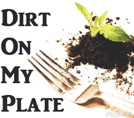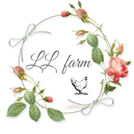by Jennifer Burcke
Photos by author
This was supposed to be my chance to share with you the way in which I used ingredients found in our kitchen to naturally color eggs for our Easter table. Last year I had shared my technique for making egg dye using food coloring and vinegar instead of a store-bought kit. The results are incredible. The food coloring solution yielded rich, jewel-toned eggs in a rainbow of deep colors.
I wondered about using natural coloring to alter the appearance of eggs that Mother Nature had already given color to. There are seven heritage breed hens living at 1840 Farm. They all have their own distinct personalities and appearances. They do have one powerful trait in common: They all lay brown eggs.
I considered purchasing white-shelled eggs at the grocery store, but chose to move forward with brown-shelled eggs instead. Last year, I had been surprised at how vibrant the colors had held on our brown eggshells. I could only hope that the natural colorants would follow suit.
We collected pint-size canning jars and lids. Then we started preparing the ingredients we hoped would bring the color to our hard-boiled eggs. The first jar soon held one cup of shredded carrots. The second jar was filled with one cup of chopped spinach leaves. A cup of frozen blueberries and a cup of frozen raspberries each found their place in their own jars.
I carefully added one cup of the hot water to each container with the exception of the brewed coffee and waited to see what kind of solutions would develop. Within 10 minutes we had colorful solutions ranging from yellow to dark russet brown. The tea and raspberries had both created rose-colored solutions. Blueberries and cabbage both created light blue mixtures. The carrots, onions and the spinach had imparted very little color to the water they were steeping in. Two tablespoons of turmeric had produced the most opaque color of all and seemed sure to create a deeply colored egg.
My children were anxious to see the results of our experiment and so was I. I removed the tray of jars from the refrigerator and prepared paper towels to give these naturally colored eggs a place to rest. I uncovered the tea solution and gently poured it down the drain. The egg that remained was still brown with the slight hint of faint pink. As I held it in my hand, I realized that the faint pink was merely a thin film of the outer layer of eggshell that had started to dissolve. It was this film that held the color of the solution it had been resting in. In fact, the egg that was revealed once I had rubbed this outer layer away was not the beautiful pink that I had hoped for. The eggshell was a sickly light brown instead.
I didn’t accept the epic failure of this experiment as easily as they had. I wanted to understand why our experiment hadn’t worked. I wanted an answer.
Was it the brown eggshells? Was it the items we had chosen to bring their natural colorants to the shells? I couldn’t be sure about the brown shells, but I had seen photos of eggs that had been colored using blueberries, cabbage and coffee. They hadn’t resembled the eggs on the counter before me. If they had, I would have never been inspired to give this process a try in our kitchen. The eggs we had were definitely not of the inspiring variety.
I should have known better than to try and improve on the natural beauty of Mother Nature. I would never dare to alter the color of an heirloom tomato out in the 1840 Farm tomato patch. It would seem ridiculous to do so.
Sometimes, nature really does know best. Maybe this was one of those times. Mother Nature already offered breeds of hens that could lay eggs in a variety of colors. Maybe I should just leave well enough alone. Maybe I should delight in the fact that in a matter of weeks, day-old chicks will be arriving that will bring new colors to the egg carton at 1840 Farm.
I mixed the cubed eggs with mayonnaise and a touch of mustard. My family gathered together around the farmhouse table and ate lunch, talking about the egg-coloring experience and its failure to produce the colors we had wanted. We laughed and decided that we clearly weren’t meant to naturally color eggs for the Easter table. While we talked, we commented, as usual, about the delicious taste of the fresh eggs in our egg salad.
I sat and enjoyed the moment filled with the warmth of family and the satisfaction of knowing that there would be more fresh eggs waiting for me in the coop the next morning. As I collect them, I will happily survey them before placing them in the egg basket. I will not be tempted to try and improve on their perfect appearance. Instead, I will celebrate the beauty in the fact that they will provide a nourishing meal for my family. When we sit together at our farmhouse table and enjoy them together, I know that the experience will be naturally beautiful.




















